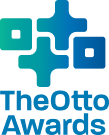The classic entrepreneurial approach is: 1, identify a problem people have. 2, create a solution to that problem. 3, market the solution to the target market. But the seismic upheaval of social media, and digital media in general, has created a new approach: build the audience first, then figure out what they need.
Emily Weiss took this approach and executed it perfectly. She launched a blog Into The Gloss as a side project while working at Teen Vogue in 2010. She spent four years building an audience of women reading and talking about beauty products, and only then did she begin to launch products that she not only was certain her audience would like, but that the audience had told her they would like.
The lessons of Glossier extend far beyond direct-to-consumer (DTC) brands. Any product or service has a target audience. Large, diffuse audiences like fashion-oriented consumers are a challenge to gather, but even a niche B2B product has an audience of hundreds or thousands. So learn from Emily’s experience and apply it to your own situation.
Emily came up with the idea of launching a blog in August 2010 while at the beach with her family. “I wanted to start this new conversation around product that was more through the lens of personal style, rather than coming from a product or launch-driven perspective,” she remembers. In retrospect, you can see the product orientation in her goals, but initially the entire goal was to build and engage an audience with well-told stories of women and their habits and opinions of beauty products.
Henry Davis, who would become Glossier’s COO, remembers meeting Emily and her telling him “I keep hearing from my audience that they want from their products, and I think I can make that for them.” So much better than creating a lip gloss and then saying, I wonder who will buy this, right?
Emily’s goal was to build a brand where “everyone can be a Glossier girl,” she says. “It’s about a certain spirit and independence and freedom and being a bit silly.”
It’s also about vulnerability and honesty. In her Into The Gloss blog post announcing Glossier (https://intothegloss.com/2014/10/emily-weiss-glossier/) in October 2014, she begins by writing that “this is a hard letter to write,” and then talks about the pressures of perfection, redefining beauty, and the importance of fun. It’s a beautifully written post whose tone was shaped by the intimate knowledge Emily had built of her audience over the previous four years. She was telling a story about the role of beauty and beauty products, of what it means to be female and successful in this modern world, of the importance of fun and fearlessness, and it worked not only because it resonated with who Emily was, but because she knew who her audience was. The products themselves are barely mentioned.
Two lessons here: 1, know your audience. That is true when you’re going in to pitch a VC for seed funds, it’s true when you’re prioritizing the features of your fintech service, and it’s true for a DTC brand like Glossier. 2, the iteration of storytelling helps you know that audience. Putting out content is a low-cost, low-risk way of seeing what resonates with potential customers—and not just products, but topics, issues, even specific phrases. Let the storytelling, and the audience feedback, guide everything from general image to specific product.
That tight feedback loop between the audience and the company, a loop bound tight by stories and content, has remained a core tenet of Glossier. “Being closer to your customer is always the right answer,” Henry says. “Always always always the right answer.”

